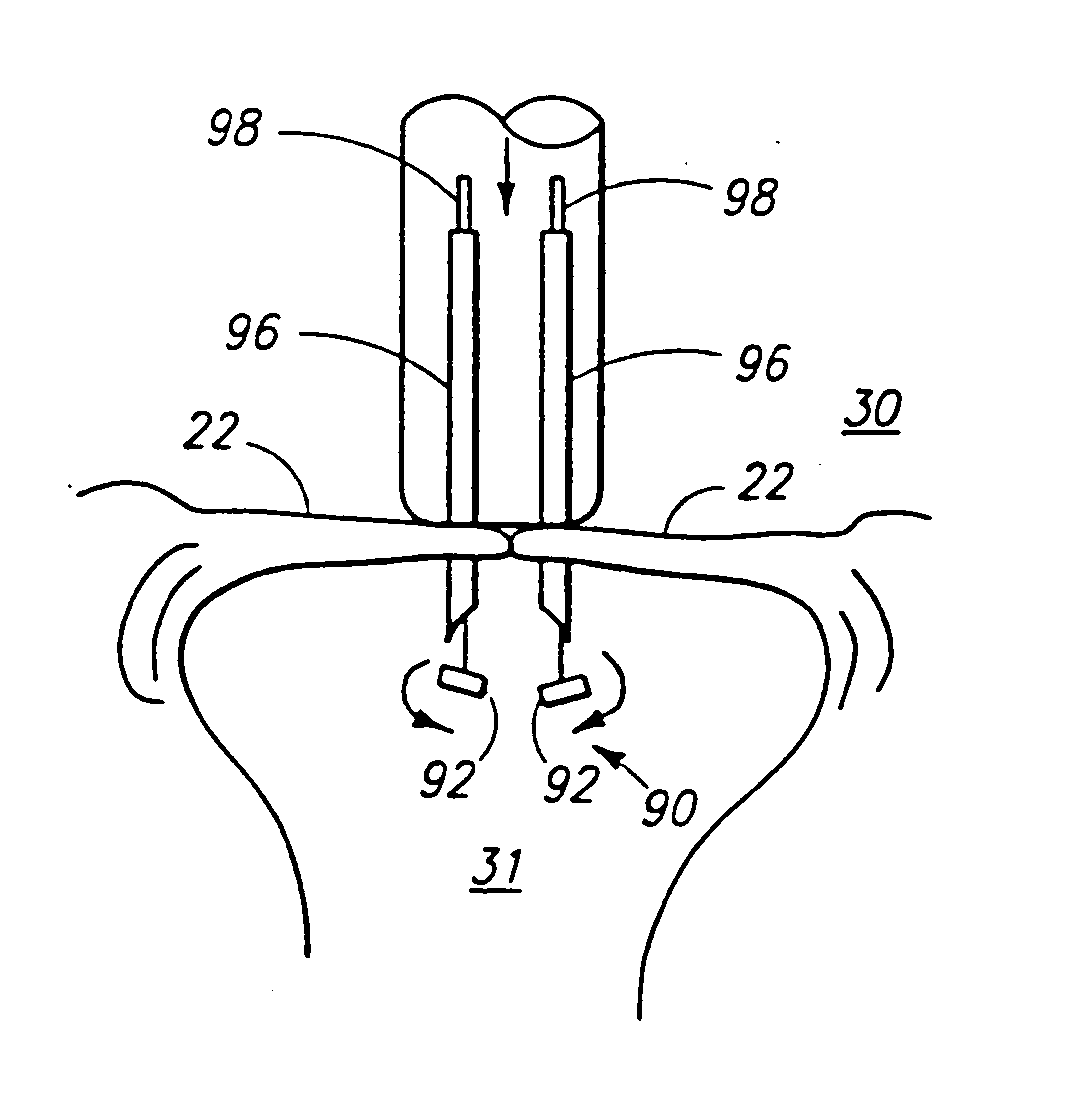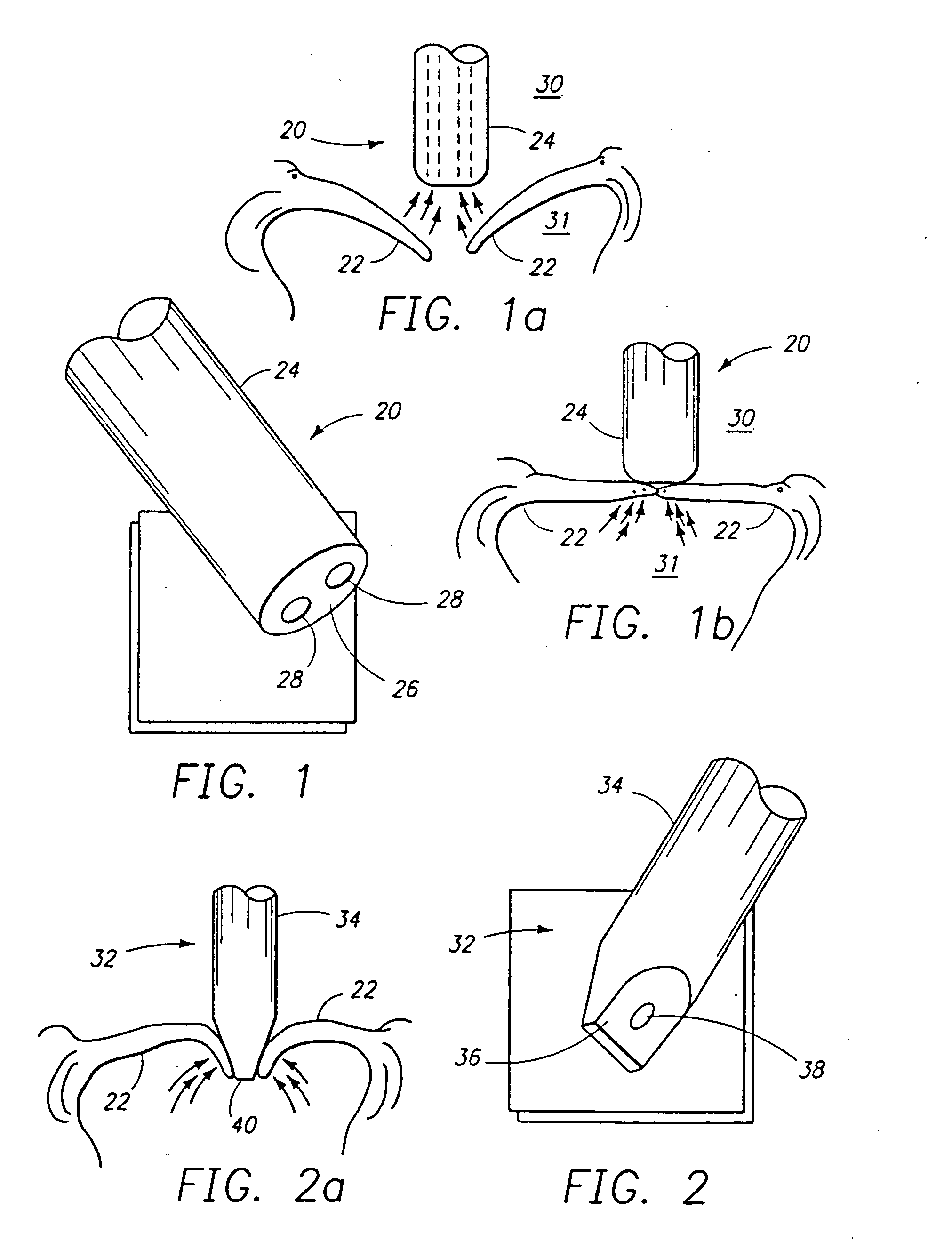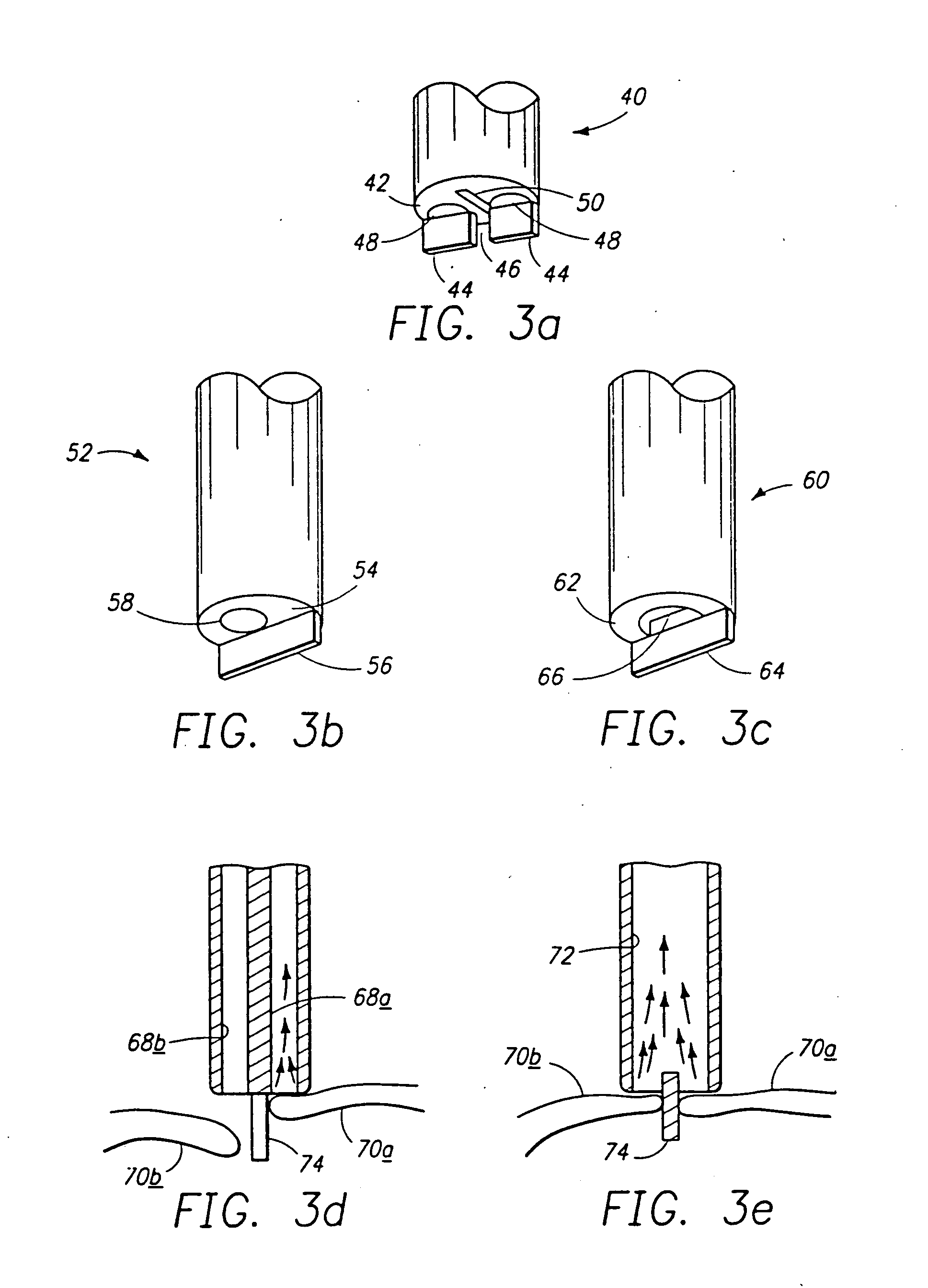Minimally invasive mitral valve repair method and apparatus
a mitral valve and minimally invasive technology, applied in the field of repair of heart valves, can solve the problems of less than perfect understanding, complicated selection of appropriate repair techniques, and difficulty in ensuring the correct repair techniqu
- Summary
- Abstract
- Description
- Claims
- Application Information
AI Technical Summary
Benefits of technology
Problems solved by technology
Method used
Image
Examples
Embodiment Construction
Exemplary Stabilizing Devices
[0086]FIG. 1 shows a tissue stabilizer 20 of the present invention that uses a vacuum to hold two tissue pieces. In this case, the tissue pieces are heart valve leaflets 22 and a valve repair procedure using the stabilizer 20 is depicted in FIGS. 1a and 1b. The tissue stabilizer 20 comprises a cylindrical probe 24 with at least one internal lumen (not shown) and having a flat distal end 26, a pair of vacuum ports 28 being disposed in the distal end 26. The ports 28 may be in communication with a common vacuum source, may be separately communicable with the source with internal valves (not shown), or may be in communication with different vacuum sources. The size of the ports 28 and magnitude of suction applied may vary depending on the application, but the ports 28 are desirably spaced apart a minimum distance to create two distinct suctions. In this manner, one leaflet or the other may be stabilized with one of the ports 28 without unduly influencing ...
PUM
 Login to View More
Login to View More Abstract
Description
Claims
Application Information
 Login to View More
Login to View More - R&D
- Intellectual Property
- Life Sciences
- Materials
- Tech Scout
- Unparalleled Data Quality
- Higher Quality Content
- 60% Fewer Hallucinations
Browse by: Latest US Patents, China's latest patents, Technical Efficacy Thesaurus, Application Domain, Technology Topic, Popular Technical Reports.
© 2025 PatSnap. All rights reserved.Legal|Privacy policy|Modern Slavery Act Transparency Statement|Sitemap|About US| Contact US: help@patsnap.com



